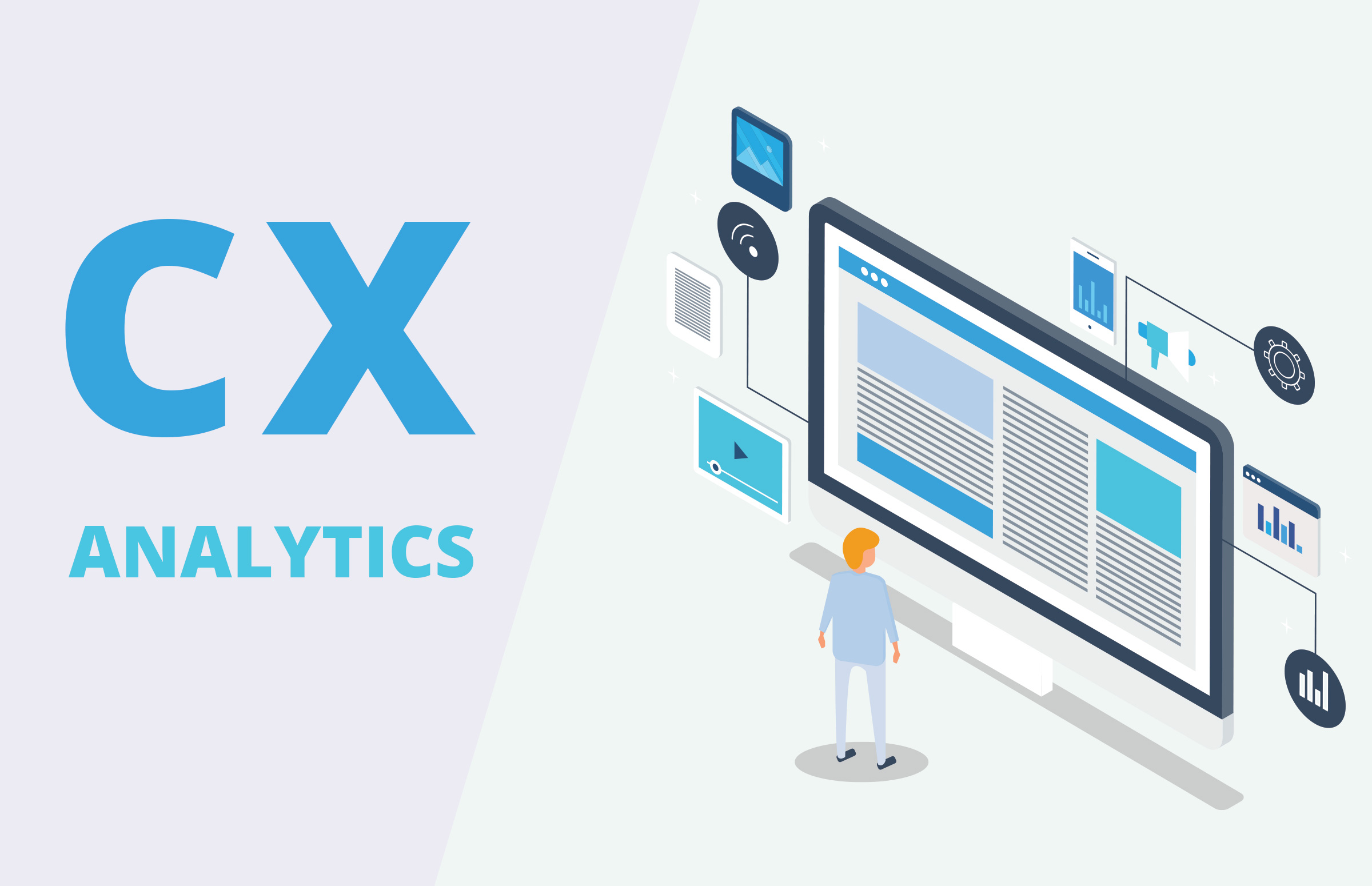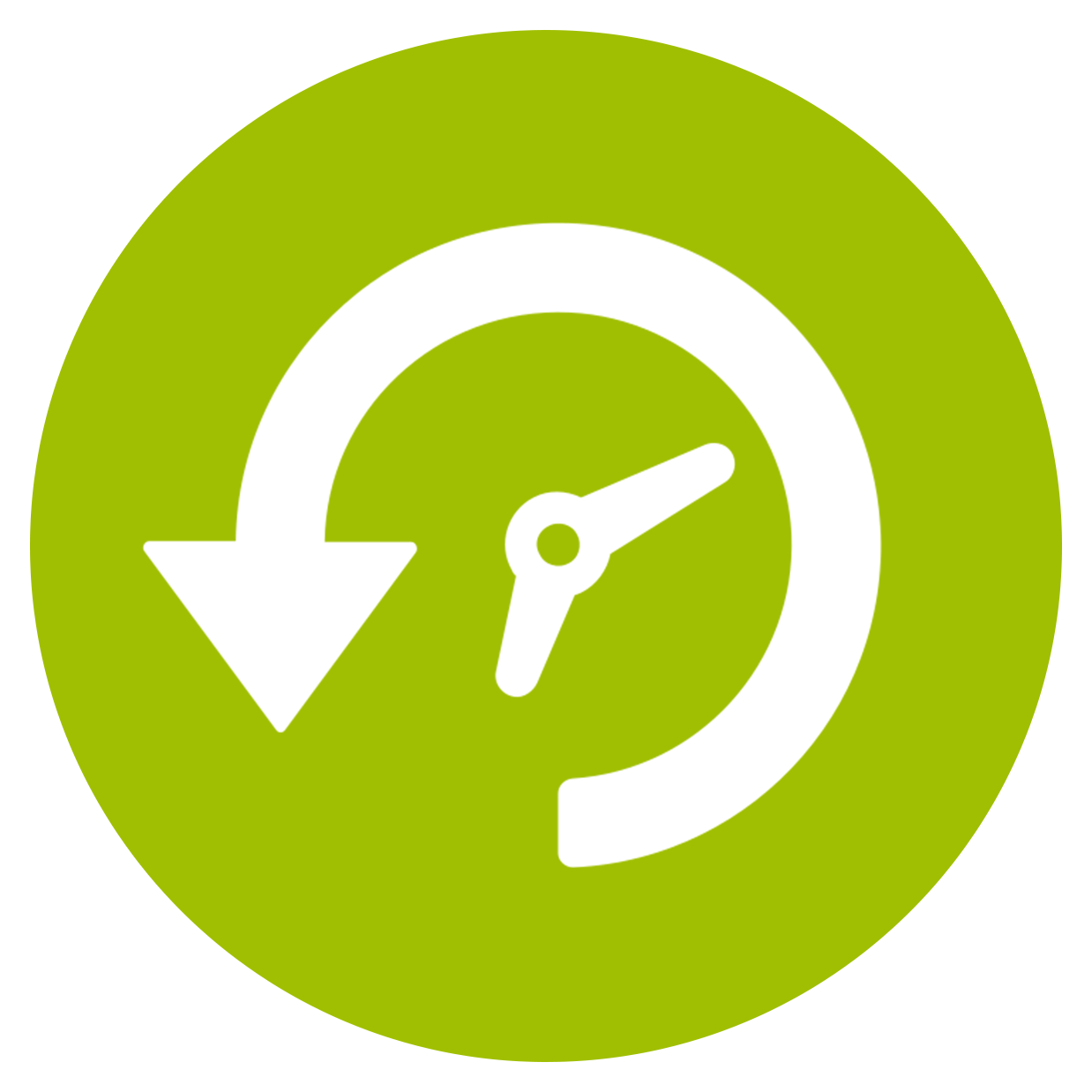CX Analytics: Understanding Customer Experience Analytics


Table of Contents
Key Takeaways:
- CX analytics are a valuable source of information about where customers’ experiences fail to live up to their expectations.
- Aside from difficulties in collecting CX data, many businesses struggle to get useable insights to guide action.
- Achieving customer loyalty and revenue growth requires addressing the behaviors that drive customer relationships.
- The SERVQUAL model uses five performance dimensions to measure how well the service delivered during an experience matches customer expectations.
- Mystery shopping works at the behavioral level to build key service skills, while customer surveys provide diagnostic insights across broader areas of the organization.
- NPS, CSAT, and CES are three Key Performance Indicators (KPIs) used to assess how well the service delivered during a customer experience matches customer expectations.
Introduction
Customer experience (CX) analytics are the measurements used to diagnose current conditions and guide actions that lead to predictable outcomes of encounters with a business. The main aim of having CX analytics is to understand your customers better so that you can find ways to improve (and increase!) customer interactions with your brand. In other words, analytics are designed to take the guesswork out of your CX strategy.
Understanding customer experience analytics is critical at a time when consumer expectations are higher than ever, even for banks and credit unions. In a digitally connected age, consumers expect to get the resources they want when they want them.
Any obstacle between the consumer and their objective-of-the-moment can be a source of frustration that can quickly send them running to the competition for a better experience!
To remain competitive, brands need to be able to recognize – and then replicate – those critical moments that are characteristic of a great customer experience. Being able to identify the drivers of customer behaviors equips leaders to inform strategies and promote new and better experiences that respond to and fulfill customers’ expectations.
The best businesses make this a habit; businesses that lack this skill…aren’t around anymore.
But how do you know the experiences you provide at your financial institution meet customers’ expectations, earn their loyalty, and drive business growth?
That’s where CX analytics come in.
It’s long been preached that “what gets measured, gets improved.” Slightly less popular is the modified version of the saying, which includes the caveat: “What gets measured and acted upon gets improved.” Data and analytics without action – and the correct action – just add up to headaches and wasted resources.
But since the customer experience is gauged using a qualitative measurement, rather than a quantitative measurement, it can be challenging to assess. This is the role that customer experience analytics have been tasked with fulfilling.
For many companies today, lack of data isn’t the issue. Many companies continue to struggle with the amount of data at their disposal and how best to categorize, synthesize, access and analyze it—and then implement decisions based on those insights.
In other words, simply measuring customer satisfaction won’t show you how to achieve it.
In an industry like banking constantly roiled by competition, analytics can be the difference between winning and losing – provided you have the RIGHT CX analytics, and you act on them in the RIGHT way.
The most common and costly mistake many businesses make when attempting to improve their customer experience is choosing the wrong method and/or the wrong source for learning what they need to know about their customers and experiences to make effective changes.
Simply put, the best way to find out what your customers are thinking and feeling as a result of doing business with you is: to ask them!
Surprisingly, some companies go to great lengths to obtain information about their customers while overlooking their customers’ own input. Such an approach can only fail to provide a complete data-driven picture of the customer experience.
Many organizations treat CX measurement as an expense and an issue rather than an investment that generates insights and returns. But research shows that the customer experience has become THE differentiator in industries like banking that are becoming increasingly commoditized.
It’s the experience that makes the difference — and it is the linchpin on which global profitability turns. That’s why it is important that you use valid, reliable CX analytics to inform and shape those customer experiences.
What Are Customer Experience Analytics?
Customer experience analytics consist of the data that reveals a customer’s relationship with your business or your brand.
They involve the systematic discovery, collection, and examination of customer data to gain intelligent insights for more informed decision-making about your brand. They are captured in the intel reports that help you make sense of your customer experiences.
The best businesses are continually capturing customer sentiment and analyzing customer feedback to understand exactly where the experiences they deliver aren’t aligning with customers’ expectations. They don’t collect data from just one channel, either, but use different data and channels to get the most holistic view of improving customer experience.
It might sound obvious to say that your most valuable resource for data about the customer experience is your customers themselves. But there is a qualitative difference between information FROM a customer and information ABOUT a customer!
Businesses invest huge sums in systems that capture (often covertly) mountains of data on customers’ behaviors when those customers would be more than willing to tell you what they think and feel about you – and what they may or may not do as a result of their experiences with you.
But just because data is being collected in the form of customer feedback does not guarantee that it will be used to bring about the desired change.
The leading obstacle to optimizing the value of captured data is lack of understanding of how to use analytics to make improvements. Executive leaders across all industries are struggling to find better ways to communicate complex insights so they can quickly absorb the meaning of the data and take action on it to produce predictable outcomes.
Presumably, you are collecting data to find answers – in the case of CX, you want to know what your customers think and feel about their relationship with you, so you can make changes to improve the service they receive.
These changes may take the form of operational changes that increase efficiency, or skills training that increases the ability of your frontline personnel.
When you are able to perform fast data analytics and pull actionable insights out of your analytics, you can make your customers’ experiences with you easier and more meaningful. These improved experiences strengthen your customer relationships and build your customers’ loyalty.
Because it costs more to acquire a new customer than to retain existing customers, it makes financial sense not to give them a reason to look elsewhere! Your customer experience analysis should keep this in mind.
One more obstacle may prevent the effective use of the insights from your customer feedback analytics: failure to share those insights throughout the organization.
Quantifying the customer experience involves creating a single view of the customer as they interact with your brand across your various channels and over time. Having a means – like a CRM or digital platform – to combine all of these disparate touchpoints can lessen inconsistencies in future service delivery and increase the personalization of service.
Organizations that do not share all of their available CX data across their functional areas are disadvantaged because they lack a complete view of the customer and the overall customer experience journey.


How Do Analytics Improve the Customer Experience?
CX analytics improve the customer experience by enabling a business to close gaps between customer expectations and the service provided.
A properly implemented CX analytics program optimizes your ability to consistently meet customer expectations by improving performance. Simply put, your analytics keep you from making the wrong choices about what your customers want and need.
Instead, they give you a clear line of sight to the products and services your customers want, as well as the outcomes YOU want.
Customer expectations are partly set by their previous experiences with a company’s offerings. Customers instinctively compare each new experience, positive or otherwise, with previous ones.
But expectations are also determined by a customer’s experiences with the competition, as well as with businesses in other industries. Even when a company’s own brand establishes expectations, the customer may be dissatisfied if the service is not up to what the brand standard is implicitly promising.
Effective customer experience analytics provide a holistic view of customer interactions with your brand over time.
Making CX measurement a regular part of your operations is the best way to ensure you keep your finger on the pulse of your customers while attracting new business and building loyalty.
As CX is directly linked to customer engagement, additional purchases, and Lifetime Customer Value, properly interpreted CX analytics have value in producing actionable, measurable, and profitable insights.
Many organizations focus on revenue growth and profitability merely at the transaction level. Instead, you have to come under that transaction and address the behaviors within the front line or back office/front office – the behaviors that will actually drive excellent and predictable relationships with each customer.
Businesses want to be connected to their customers not by transactions but by ties of loyalty. Relationships forged on trust are more likely to survive when unexpected “shock events” or disruptions occur to your services.
When you have that strong customer loyalty, the result is retained, repeated, and referred business.
People – customers – are staying with you, they’re buying more from you, and they’re telling others about you in a positive way. And with social media today, that becomes more powerful than ever as you can tap into the digital customer experience.
People are going to talk to others about their experiences, so you want to make sure they are saying good things about you, not warning others off from doing business with you. That’s why it’s so crucial for your brand to contact and act on customer experience data!
With today’s analytics services and the accessibility of large amounts of consumer data, companies can get a much clearer picture of their customers, precisely identify CX issues, and personalize customer experiences in the moment. The ability to proactively monitor CX performance and react to customer problems in real time is what distinguishes leading companies from the rest.
This capacity enables an organization to “close the loop” and intervene with customers to rescue an at-risk relationship. Such timing may make all the difference in preventing the competition from scoring another one of your customers.
Few businesses are able to survive in the current market with a high rate of customer attrition.
Many factors contribute to making customer acquisition costs higher than ever. At the same time, increased competition and the convenience of digital channels have made it difficult to nurture brand loyalty.
As a result, the average lifetime value of acquired customers is lower. Properly measuring and managing CX helps retain customers over the long term, negating the need to focus solely on acquiring new customers.
Components of the Customer Experience and How They Impact CX Analytics
The components of the customer experience measured in an effective CX analytics program are taken from the time-tested and widely accepted SERVQUAL (or RATER) Model.
This model evaluates how well the service delivered during a customer experience matches customer expectations. It is applied in the live service environment to identify gaps between the expected level of service quality and the level actually delivered.
This approach to CX measurement has two objectives:
- Standardize service to provide consistency of quality
- Differentiate the business from competitors through higher-quality service
The SERVQUAL Model is made up of Five Performance Dimensions, representing how consumers generally organize information about service quality in their minds.
Each Performance Dimension is an important component of the customer experience:
Reliability
Reliability means that the representative of the business can be counted on to provide accurate and dependable service. Quite simply, the employee does what you want them to, and they do it correctly.
As a brand trying to earn customer loyalty, you are making a commitment to provide error-free service on a consistent basis.
If the frontline employee is getting the transaction wrong or providing misleading or erroneous information, customers can be easily persuaded to take their business elsewhere.
Tangibles
The Tangibles of the customer experience involve the cleanliness and professional appearance of the staff and facilities.
Appearance establishes the first impression a customer gets when they visit a business, and you don’t want to get off the wrong foot.
Yes, appearances aren’t everything. But neatness still counts, and a well-organized environment and well-groomed personnel can provide confidence in the organization the consumer trusts with his or her business.
Assurance
Assurance means that the employee is taking the initiative to uncover the customer’s needs and delivering service in a courteous and willing manner.
Your courtesy should match your competence. Most customers can detect genuineness in an employee’s manner and expression.
Interest, or lack of it, comes through in an employee’s voice, body language, etc. Customers like to know that they are being regarded as individuals, not just a number.
Responsiveness
Responsiveness equates to the service being provided in a timely and personalized manner.
It’s not enough to say that “Your service is important to us”; it has to be demonstrated in how representatives greet each customer and make them feel like a priority.
People like to be acknowledged by their name and made to feel special. With consumer tolerances constantly fluctuating, you can’t assume they are going to have the patience to stay on hold or in line when your competitors promise a shorter wait time.
Empathy
The elements of Empathy – active listening, communication, and approachability – make up the emotional connection that is a differentiator for many brands.
Trust is the cornerstone of any banking relationship, and that begins with showing that you understand the emotions of your customers: what are their biggest concerns when it comes to their personal finances? What are their dreams for the future?
By discovering and acknowledging what motivates their decisions and behaviors, you establish relationships that can lead to lifelong loyalty.
With all of today’s digital channels, it can be difficult to make the human side of the transaction come through. Winning institutions will be those that can provide caring service exactly when it is needed.
Of course, a manager can’t just tell his customer-facing team to go out and make sure they deliver service in such a way that elicits Assurance from the customer. There are certain behaviors that communicate this Assurance, certain behaviors that communicate this Reliability specific to each industry’s environment.
So the first thing for leadership to do is to agree upon and set in place a roster of service standards that the organization can commit to delivering. What must the frontline service providers learn, demonstrate and master in order to deliver service that will be considered excellent across the spectrum of idiosyncrasies of individual consumers?
Measuring these SERVQUAL dimensions regularly over time can help your business understand customer expectations, perceptions, and areas for improvement, as well as track your progress in increasing your service quality.
There are many ways to measure the SERVQUAL dimensions, but one of the most effective is mystery shopping, using objective, behavior-level assessments from trained evaluators.


How Do You Measure with Data the Experiences that Customers Have?
You measure the customer experience by capturing the right kind of information, from the right source, for your particular needs.
The accelerated pace of change in today’s marketplace requires a constant stream of insight into what customers are thinking, feeling, and doing when they do business with you. But how do you capture that insight?
How do you get actionable feedback FROM your customers, rather than just information ABOUT your customers?
In the research field, different research instruments serve different purposes. One type of research is applied research, which deals with solving real-world, practical problems.
A mystery shopping program is an instrument used to come all the way down to the exact behavioral level, with the objective of building key skills. It involves a select group of evaluators from your customer pool who are assessing whether or not they’re experiencing what your standard is for service and sales delivery based on the actual behaviors that are observable during a live, real-time service experience, whether it’s on the phone, in-person, digital – any and all channels.
In contrast, the survey instrument is intended to capture higher level, more general insight, more broadly, from those who are not even expecting to give that feedback. It targets high-level feedback that gives diagnostic insight into particular areas of the organization to, for example, reduce friction, seize opportunities, and identify issues with products, processes, channels, and people that need to be addressed. These insights allow you to perform more in-depth customer interaction analytics.
In essence, customer surveys reveal the “what,” while mystery shopping reveals the “why.”
Surveys address the end product, revealing customer expectations and perceptions in total. Mystery shopping reveals performance at each identified stage of the process.
As each research instrument serves a different purpose, a business should make sure the correct one is being used for the situation. In some cases, these tools can complement each other as part of a comprehensive CX improvement strategy. As you decide which tools to use, remember that the ultimate goal is always to improve customer experience.
Essential KPIs to Track the Customer Experience Journey
Essential customer experience KPIs serve as benchmarks that allow you to track your progress over time.
To clearly establish the impact a properly implemented service improvement program can have, you need to know where you’re starting from — what your service culture currently IS – in concrete, measurable, behavioral terms.
Beyond the obvious benefits of measuring performance improvements and calculating ROI, benchmarks also minimize the pushback that inevitably occurs as the data reveals problem areas that need to be acknowledged, repaired, and elevated.
Human nature being what it is, you can expect instances where the involved parties attempt to explain, deny, or defend their behavior with false memories and distortions of the truth. Benchmarking provides an objective record for comparison.
An important step to improving your customer experience is identifying which CX metrics deliver usable information about your customers. You’ll use this data to build your CX strategy of bringing your customers closer and strengthening their loyalty.
A key performance indicator (KPI) is a measurable value that demonstrates how effectively a company is achieving or making progress toward key business objectives. But a concept like customer experience can be difficult to quantify.
Relying exclusively on one CX metric can give an incomplete or distorted picture of your customer mindset.
Understanding your customers’ perceptions, level of loyalty, and high-level feelings about your brand are the primary focus of CX metrics. Still, exact measurements for gauging this will evolve with each customer’s needs and expectations.
So, for CX, as in other areas, be sure to use the right tool to measure what you want to know.
Some of the KPIs commonly used by businesses include:
Net Promoter Score: Measuring Overall Customer Experience
Net Promoter Score, or NPS®, has achieved widespread popularity due to its apparent simplicity as a predictor of customer loyalty and industry benchmark.
It uses an 11-point (0 to 10) scale, asking respondents whether they would recommend a business to others based on their service experience. However, NPS requires more extensive findings beyond the “Would you recommend…?” question to be truly effective at driving meaningful change.
Follow-up questions are widely recommended to reveal the underlying reasons for the primary rating.
Net Promoter Score created and popularized the thought of, “We have just one number that we have to actually deliver on, and then all of the growth that we could ever want is going to fall into our laps.”
But the reality is that there is no silver bullet. If you truly want to identify exact employee behaviors and determine if those behaviors meet your customers’ expectations and standards, the easy way is not going to do all of that.
Customer Satisfaction Score: What Type of Analytics Does It Offer?
Customer Satisfaction Score, or C-SAT, simply gauges whether customers were satisfied with their experiences.
In other words, did the service provided meet their expectations? Because satisfied customers are likely to do additional business with you, this is a worthwhile metric to track.
And if a customer is NOT satisfied, you want to know the cause, so you can take steps to address it with customer experience management before other customers are similarly impacted.
Customer Effort Score and Its Use in CX
Customer Effort Score, or CES, measures how easy it is for customers to do business with you.
Any complexity in a banking transaction is an opportunity for friction. When your customer has to exert effort to do business with you, they may get through that transaction, but you won’t get many chances for the next one, to provide their next product or service, or to build the relationship.
Through tracking Customer Effort, you can pinpoint the areas where it is not easy for consumers to do business with you. You can drill down into the data, targeting the “pain points” that show where customers struggle. Then you can prioritize how to fix those areas based on customer experience metrics like Customer Effort.
By making things easier, you give your customers time for (let’s face it) things they’d rather be doing.
The time you give back to your customers becomes your competitive advantage. You create loyal customers by helping them solve their problems – not by creating more.
To effect real transformation, rather than merely incremental change, CX analytics should have the following characteristics to optimize measurement and management of the entire CX experience:
Data FROM, not just ABOUT, the Customer – It is critical to determine what is important to your customers – what they are thinking and feeling about you in the moment and what they might be doing as a result. You can’t rely on merely descriptive data about what they have done in the past as a basis for action.
Leading, not Lagging, Indicators – Without a holistic approach that incorporates multiple CX metrics, including leading indicators in real-time, you risk missing actionable information crucial to achieving your ultimate goals around the customer journey.
Actionable, not just Interesting, Information – Having all the customer data in the world is useless unless you know how to act on it across all areas of your organization.
Prescriptive, not just Predictive, Indicators – Prescriptive indicators not only anticipate what will happen and when it will happen but also explain why it will happen. Prescriptive analytics continually absorb new data, allowing actions taken in anticipation of future outcomes to be better informed.


Companies with a culture of decision-making based on objectivity are typically more successful than ones that largely rely on hunches or intuition.
CX analytics tie customer behavior with concrete metrics, which you can use to make more informed business decisions.
In order to grow into a brand that truly caters to the needs of each customer, it’s not enough to guess your next move based on a few anecdotal pieces of evidence or an internal company conversation. CX data informs you about what customers actually expect, and CX analytics are how you make data-driven business decisions that improve the customer experience.
CX vs. UX in Experience Analytics
CX vs. UX illustrates the healthy debate around the conceptual difference between customer experience (CX) and user experience (UX). The two are related but can be distinguished by their primary focus.
User experience focuses on people directly interacting with a singular product or service. In most cases, this product or service is digital in nature, e.g., a mobile app, website, or computer software.
Customer experience, in contrast, is much broader and consists of the total interactions a customer has with a brand, involving people, products, processes, or channels.
Understood this way, CX encompasses user experience.
User experience is thus concerned mainly with a user’s interaction with a single product, while customer experience considers the consumer’s experience with a brand, or the organization representing it, as a whole.
Reflecting these differences, each uses a different set of metrics.
UX is measured with metrics that revolve around the functionality and usability of the product: success rate, error rate, clicks to completion, and abandonment rate.
Measuring CX involves metrics like those described above (NPS, C-SAT, CES) that look at the larger picture of customer loyalty and the likelihood of future business.
One way to sum it up: CX is concerned with cultivating positive experiences with your brand, while UX focuses on improving product interactions to help create those positive experiences.
Ultimately, what matters is that you are providing a great experience during any interaction customers have with your brand. All areas of an organization need to collaborate to ensure all customer touchpoints exhibit minimal friction so that they are differentiated from what is offered by the competition.
CX vs. DX: Comparing Their Impact on the Customer
CX vs. DX, or the digital experience, has become an increasingly important dynamic of the customer experience.
In the banking industry, for example, branch closures necessitated by the COVID pandemic in 2020 accelerated the transition to digital forms of banking.
Even with a return to face-to-face banking options, many financial consumers will continue to take advantage of the efficiency and simplicity of conducting their own banking transactions remotely at their convenience.
Accenture, for example, reports that 80% of consumers who increased their use of digital channels during the pandemic plan to sustain their level of usage.
Businesses that don’t really know what the customer experience is like in their digital channels risk losing their brand reputation, as well as their customers. Without customer feedback, organizations lack insight into what they need to prioritize and change to meet their customers’ expectations.
For example, if your objective is to provide digital services customers will continue to use, you need to ensure you offer the features your customers want and expect. Then you have to ensure their experiences in these channels are seamless, predictable, and free of friction.
For businesses that rely on personal, empathetic service to differentiate themselves in their market, it is important to maintain that sense of human connection, even when digital channels are the go-to option.
Customers need to know there are people behind those channels who can give them reliable answers in a genuinely friendly voice when they need help. Customers still value the “high touch” with their “high tech.”
As with other channels, the most effective CX analytics provide insights that show not just where you ARE but the correct path forward based on your identified priorities. For the digital realm, a customer data platform that synthesizes information across channels like social media can be invaluable. You want to know where customer traffic is going and what channel is delivering the highest quality experience for the customer.
Through rigorous process methodology, in-depth data analysis, and high-level commitment, businesses can identify and prioritize tasks for improving their customers’ digital experiences. At the same time, they can promote operational efficiencies in digital processes without sacrificing the best-in-class service customers expect.


Closing: Why Do Customer Experience Analytics Matter for the Customer?
Customer experience analytics allow you to make data-driven decisions on improving your products and services while discovering obstacles your customers are encountering that you may not be aware of.
In today’s hyper-connected, data-driven business world, the amount of available data is overwhelming.
Knowing what, when, and how to measure customer experience analytics is key for every senior executive that wants to drive change by transforming their organization’s data into enterprise-wide action. That’s how you operationalize your CX analytics to intercept your most pressing challenges.
Data alone will not provide you with the outcome you desire. In fact, data alone will most likely confuse and confound your progress. Only when managers and executives are properly enabled to understand, identify and take action on that data is improvement possible.
Such enablement comes from expert guidance and critical practices honed over time by professionals in the field of customer service research. When you follow their guidance, you can build a team of internal talent that can provide an appropriate and effective response to the feedback, equipping frontline team members with the best practices to ensure their success. From contact center solutions to a more streamlined customer journey with fewer pain points, you can give your employees the solutions they need to provide the best experience possible.
Creating great customer service takes time and effort. You must be intentional about collecting feedback, putting that feedback into action, and creating exceptional experiences for your customers. These functions will be much easier with a coherent customer experience analytics strategy.
When you are measuring the correct things and interpreting the data correctly, your CX analytics will give you the insights you need to inform your CX strategy, change practices, and achieve your business imperatives and goals.
Want to learn more about what a solid CX analytics strategy can do for your bank or credit union’s performance? Let us show you how our Insight Builder survey platform can help you make the most of your customer feedback and create customer experience analytics that work for your brand! Contact our team today to get the solutions and consultative expertise you need.
Have More Questions? Reach Out to Our Team Of Experts
Net Promoter®, NPS®, NPS Prism®, and the NPS-related emoticons are registered trademarks of Bain & Company, Inc., Satmetrix Systems, Inc., and Fred Reichheld.















